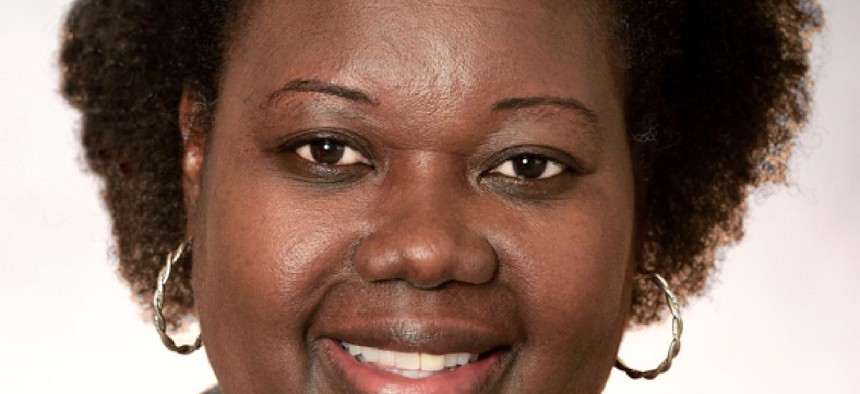Kinship care, how it works and why it should be expanded

Recent legislation to expand the Kinship Guardianship Assistance Program, or KinGAP, introduced by state Sen. Tony Avella and Assemblyman Andrew Hevesi, benefits foster care providers by supporting the agility and innovation needed to create the stability that young people so desperately need. Gov. Andrew Cuomo should sign this bill.
Work in child welfare is fraught with complexity. From the beginning, our work at JCCA (formerly known as the Jewish Child Care Association) is divided between the push and pull of meeting families’ urgent needs and planning a future for them that is free of our involvement. To do our work well requires dedication, creativity and flexibility.
When a child comes into care, they are placed with a temporary foster caregiver who assumes responsibility for their needs while family court, children’s services and an organization like JCCA all work to explore options for a permanent placement. Two common options are strengthening an existing family so that the child can come home, known as reunification, or adoption, finding a new family to take permanent custody of a child.
Adoption is ideal for many children in foster care, but requires a parent to terminate or surrender their parental rights. This can be traumatic, and it can take years. And sometimes it doesn’t work out.
What happens when neither reunification or adoption will work?
Fortunately, we have a third option. For medical, legal and academic purposes, a guardian has all the same rights as a parent, but the parent retains the option to regain custody.
This may sound complicated, but so is life for our clients. Here’s how it works:
Kaya lives with her godmother, Rhonda. Though Kaya’s mother, Rita, was never able to meet all the requirements for reunification, she continues to be present in Kaya’s life. As Kaya has gotten older, they’ve forged a new bond, encouraged by Rhonda. Kaya is stable and happy, and Rhonda is satisfied with her relationship with both Kaya and Rita. Rhonda doesn’t want to adopt Kaya and be “mom.” And for her part, Kaya doesn’t really want to be adopted either. This is called the “loyalty bind,” even in troubled relationships, many children don’t want new, nurturing connections to trump biological ties.
At JCCA, our team works together to explore every possible placement option among existing relationship connections because we know that our clients do better in “kinship homes.”
Luckily, the New York City Administration for Children’s Services recognized this in the late 1980s when it began the practice of reimbursing close relatives for the expenses of fostering their family members under kinship foster care. Later, ACS expanded the term “kin” to include those who were not related by blood, but had strong connections to the child, such as neighbors or teachers.
It’s paying off with faster, more stable situations for our youth. According to ACS, JCCA is one of the best organizations in the city when it comes to finding kin homes for our children within 45 days of placement in foster care.
However, non-biological kinship foster caregivers are currently only eligible for reimbursement while they are fostering. The proposed legislation would allow non-biological kinship foster caregivers to continue to be reimbursed if they choose to become guardians.
Before KinGap, Kaya’s permanency plan would mean staying in foster care or disrupting her relationships with loved ones. But under Avella and Hevesi’s proposal a new path to permanency would be made available. Rhonda could become a guardian – avoiding the lengthy adoption process and retaining the reimbursement payments previously available only to biological guardians. Kaya can continue to build a bond with her mother – and Rhonda can continue to collaborate with Rita without ever having to consider replacing her. Kaya, surrounded by people she knows and trusts, will be less likely to return to care.
The guardianship option improves outcomes by allowing children to remain with loved ones. The payments reduce poverty by making sure kids have the resources they need when staying with people they know in their own communities.
The expansion legislation was unanimously approved in the Assembly and state Senate and is awaiting Cuomo’s signature. KinGAP is a tremendous step forward for young people and their communities. We are already rigorously asking about kinship options, searching specialized databases and educating our families. We’ve had remarkable results in placing our clients; in 2017, about 40 percent of our foster homes were kin homes.
JCCA is proud to have worked with lawmakers in the creation of this legislation and we urge Cuomo to sign Senate Bill S4833A so that more successful kin home placements can become permanent resources for the children who need it most.
This expansion is beyond anything I’ve ever seen before. After more than 25 years in child welfare, it’s gratifying to see legislators pushing policy shifts that support a full range of possible permanent and family arrangements for our young people. Once this bill becomes law, we will be thrilled to watch JCCA’s families leave our care knowing that KinGAP is making additional resources available that leverage the family’s strengths in support of youth’s independent futures.
Keturah Pierre, senior vice president of community services at JCCA, oversees the organization’s foster care, preventive, educational and Jewish community programs.